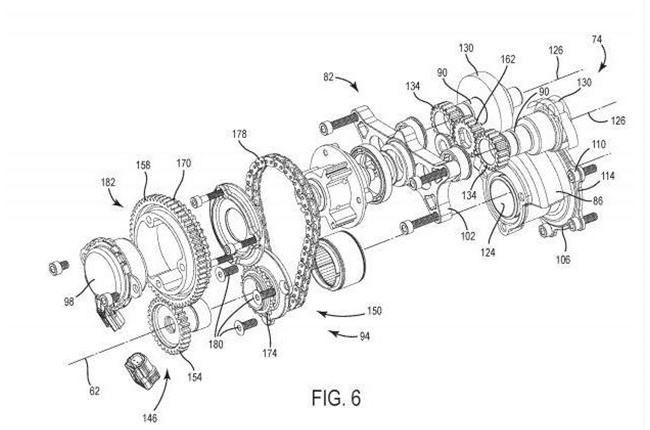Harley-Davidson files a new patent for a VVT system on its V-twin engines
Harley-Davidson’s older V-Twin engines get a new lease in life.

Harley-Davidson filed a new patent showing a variable valve timing system. This is a welcome development for the Milwaukee motorcycle brand following more stringent Euro 5 emission standards that could potentially put their bikes into early obsolescence. For now, loyal Harley-Davidson fans may be assured that classic favorites like the Iron 883 and Forty-Eight could get this new engine tech moving forward.

At first glance, the patent sketches still appear like a conventional air-cooled V-twin engine, typical of a Harley-Davidson. However, a closer look reveals that the engine includes a cleverly placed Variable Valve Timing (VVT) system integrated into it.
The VVT timing system was first Pioneered by Honda way back in 1983 with the CBR400F. It eventually became integrated into a number of Japanese motorcycles throughout the 1990s and early 2000s. It is the first time that a VVT timing system has made its way to a Harley-Davidson V-twin engine, and it’s a welcome development for the American motorcycle brand.

The operation of a VVT is a fairly complex undertaking, more so with a classically styled V-twin engine configuration. The mass of its parts falls under its balance module and the crank is connected to the small gear (#154) which then rotates the gear above it (#158). Behind that larger gear is a smaller toothed sprocket that turns the chain (#178), which spins the balance weight (#86) in the opposite direction to the crankshaft. The VVT unit itself (#98) is connected to the cam gear, which adjusts the timing of both the intake and exhaust valves.

In general, VVT systems are lauded for boosting an engine’s low, mid and top-end power and torque. For Harley-Davidson’s aging engines and motorcycle range, getting them up to speed with the ever-tightening emission standards becomes more difficult and costly to update its internals without sacrificing power. The VVT is one of the simplest ways to improve overall performance even if it is just a bit. Hopefully, this engine tech finds its way on to even more bikes soon. .
Tagged Under
Related Articles
-
Harley-Davidson X350 and X500 make their way to Japan – Philippines next? / News
Harley-Davidson is launching the X350 and X500 in Japan. Would you like to see these mid-sized roadsters in the Philippines?
-
Harley-Davidson trademarks the Nightster 440 in India / News
Harley-Davidson has patented the Nightster 440 name in the Indian market, suggesting that the brand is working on a sportier version of the new X440.
-
Harley-Davidson unveils limited Fast Johnnie Editions as part of its Enthusiast Collection / News
Harley-Davidson has launched the limited Fast Johnnie Editions of the Low Rider ST, Street Glide ST, and Road Glide ST.
-
Harley-Davidson India releases more photos of the upcoming X440 / News
Harley-Davidson of India has dropped even more photos of the upcoming X440 small-displacement model.
-
Check out the new Harley-Davidson X440 slated for launch in the Indian market / News
Harley-Davidson has released images of the highly anticipated X440 developed in partnership with Indian company Hero MotoCorp.
Latest News
-
Suzuki Philippines celebrates 50-year milestone with One Suzuki Kick-Off Ride / News
Suzuki celebrates its 50th anniversary with the One Suzuki Kick-Off Ride
-
Honda shakes up the retro scooter game with the Giorno+ / News
Honda has released the Giorno+ 125 scooter in the Philippines starting at P101,900.
-
Royal Enfield Philippines inaugurates new flagship store at Brixton, Pasig / News
Royal Enfield has opened the doors to its new flagship dealership in Brixton, Pasig.








